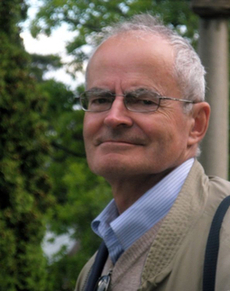Petr P. Petrov

Petr P. Petrov
Main Researcher of the Stellar Physics Department, CrAO. Dr. Sci. (physics and mathematics).
Scopus AuthorID: 8748407200
Petr Petrovich Petrov was born in 1945. In 1963–1968 – a student of Ural State University. In 1968–1971 – a PhD student at the Crimean Astrophysical Observatory (CrAO). In 1977 he defended the Ph.D. thesis “The photometric studies of T Tauri stars”. Since 1971 he has been working at CrAO. In 1987–1996 – a vice director of CrAO. In 2005 he defended his Doctoral thesis “Activity of young solar-mass stars”. An Honored Worker of Science and Technology of Crimea (2008) and Ukraine (2009). Dr. Sci. (physics and mathematics), a member of IAU, a Foundation Member of EAS. An author of 136 publications.
The basic area of researches – non-stationary processes in the solar-mass young stars. In 1975, jointly with A.G. Scherbakov he put forward a concept of magnetic activity in T Tauri stars. In the 1980s he participated in the development of the orbital observatory Astron, in the development of new devices for spectral observations and in introduction of electronic image-detectors in astronomy. In the 80s and 90s, jointly with Swedish and Finnish colleagues he carried out long series of high-resolution spectroscopic observations of the selected T Tauri stars. As a result of these studies it was shown how magnetic fields control the motion of gas in the vicinity of a T Tauri star. It was also found that the magnetosphere of T Tauri stars is, in general, non-axisymmetric, which causes rotational modulation of radial velocities of emission lines. Jointly with Swedish and American colleagues he managed to extract a spectrum of gas accreting onto the star, and determined its physical parameters. He investigated the effect of veiling photospheric spectrum of T Tauri stars with accretion disks. Together with G.H. Herbig he carried out a detailed spectroscopic study of the fuors FU Ori and V1057 Cyg. As a result it was shown that the optical spectrum belongs to the central fast rotating object, while the infrared radiation indicates the presence of an accretion disk of high luminosity. He also studied the wind dynamics in fuors and Classical T Tauri stars.